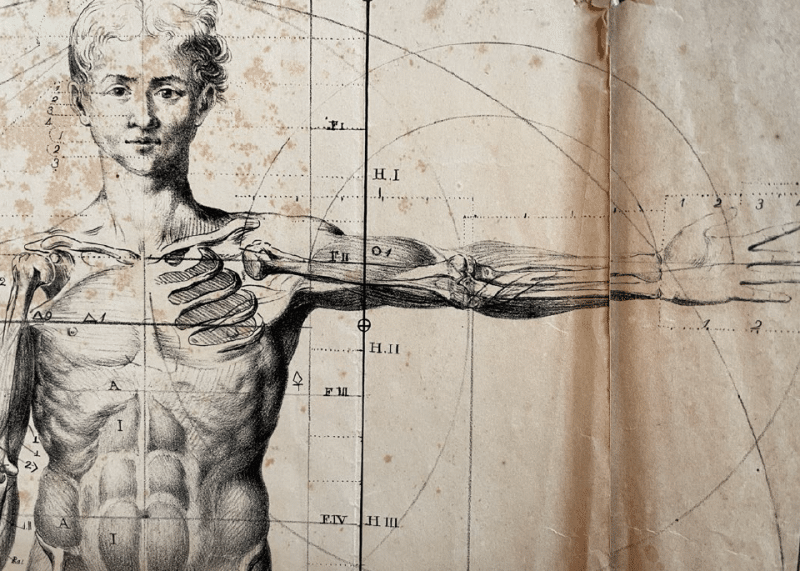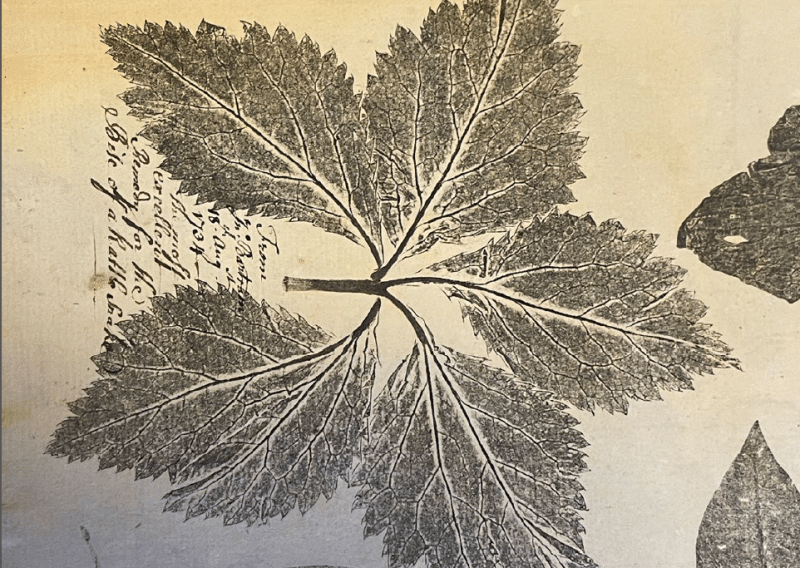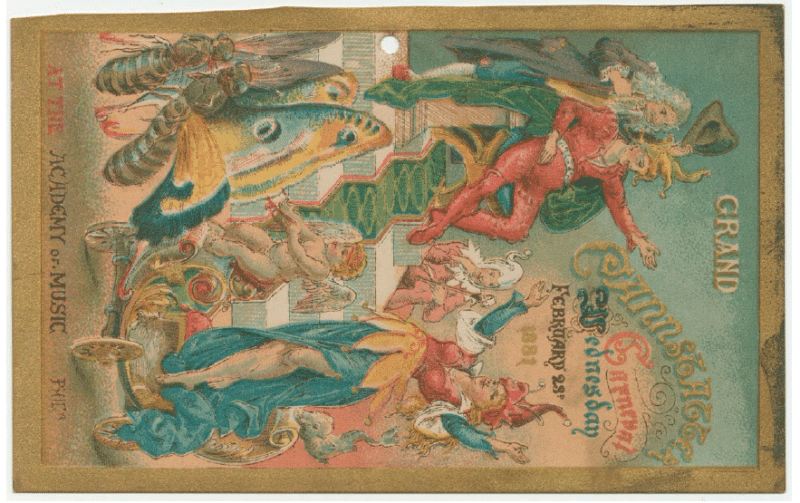Library Company of Philadelphia Shareholder Gift 2023
Dear Library Company of Philadelphia Shareholders,
Each year, we are delighted to share a special thanks of appreciation for your dedicated support of the Library Company, its treasured and unique shareholder program, and its collections. This year, members of our collections staff have submitted favorite images that represent the breadth of our holdings, and we have turned these images into special postcards, exclusively for our shareholders. You can scroll through this webpage to learn more about these special pieces our staff chose to highlight for you.
We invite you to keep and enjoy your favorites, and to send the rest as Library Company love notes to family and friends. Do these images trigger thoughts of a latent research project you’ve been wanting to work on, or make you want to learn more about our holdings? Contact us to schedule a research appointment with our staff! Join us for our collection reviews, book talks, and other special events!
With all best wishes,
Your Friends at the Library Company of Philadelphia
John Rubens Smith. A Compendium of Picturesque Anatomy, adapted to the Arts of Design, Painting, Sculpture and Engraving
Boston: Published by the author, 1827
John Rubens Smith (1775 – 1849) emigrated to New York from London in about 1807, having received training in painting and engraving from his father, mezzotint engraver John Raphael Smith, and the Royal Academy in London. He spent much of his life between 1809 and 1844 traveling the Eastern seaboard and documenting early American city views, including a number of images of Philadelphia. This is the only edition of an anatomical drawing book by John Rubens Smith. The skeletal plates are drawn on stone by Smith after an earlier work by the Spanish artist-anatomist Crisóstomo Martínez. Quite rare, it last appeared at auction in the 1930s.
Purchase supported by donations from Randall Miller and Charles Rosenberg.
Loganian Library Loan Book, 1794-1836
Library Company Archives
Zachariah Poulson (1761-1844), who was Librarian at the Library Company from 1785-1806 used this volume to record books borrowed from the Loganian Library in the decades following its merger with the Library Company in 1792. One entry shows that Nicholas Collin, the scholarly rector of Old Swedes’ Church, borrowed Logan’s Anglo-Saxon dictionary. In 1808 Collin wrote the Directors of the Library Company: “Researches in the Loganian Library enable me to assert that it contains treasures of knowledge more valuable than are estimated by the public…”
Joseph Breintnall. Nature prints of leaves, ca. 1731-ca. 1744
Joseph Breintall (d. 1746) was the sheriff of Philadelphia between 1735 and 1738, he was a friend of Benjamin Franklin’s, and he was the first secretary of the Library Company. But his true passion seemed to be the natural world. He preserved information about the plant specimens he collected by creating impressions of the leaf surfaces using the technique of nature printing. Between c. 1731 and c. 1744, he created hundreds of leaf prints as records of botanical specimens he gathered himself and from his networks. Breintnall also most likely used his experience with leaf printing to assist Franklin in the creation of a metal cast of a leaf impression used to print currency incapable of being counterfeited.
These sheets of crisp, almost photographic, prints of leaves are wonderful in and of themselves, but their research value is enhanced by Breintnall’s annotations about what the specimens are and when they were collected. If the leaf was given to him by a friend or acquaintance, he sometimes included that person’s name. On this sheet Breintnall inserted his notes into the negative spaces around the leaf. The leaf highlighted with a yellow frame is that of a rattlesnake root (sanicula canadensis) which Breintnall notes was supplied by none other than John Bartram on August 18, 1734. Breintnall identified this specimen as “the most excellent remedy for the bite of a rattlesnake.”
Thomas Wright. An original theory or new hypothesis of the universe…. London: printed for the author, and sold by H. Chapelle, 1750
Thomas Wright (1711-1786) received early instruction in mathematics, which he used in his later career as a tutor and landscape gardener. This book, for which he is most well-known, explains Wright’s theory that the solar system must be arranged in a disc or grindstone shape, or else in a spherical shell, with the sun at the center. Wright’s theory did not receive attention from astronomers at the time, but is now acknowledged to be a precursor to William Herschel’s discovery of and work on spiral galaxies at the end of the eighteenth century.
Grand Cannstatter Carnival. Wednesday, February 23d, 1881. At the Academy of Music, Phila. (Philadelphia, 1881). Chromolithograph trade card.
This is one of a series of illustrated trade cards promoting performances and events at the Academy of Music. Founded in Philadelphia in 1873, the Cannstatter Volksfest Verein society celebrated the customs and traditions of its founders’ southwestern German heritage. It included an active charitable mission that was funded from income raised at the annual Volksfest, as well as gala balls and, advertised here, the Carnival.





